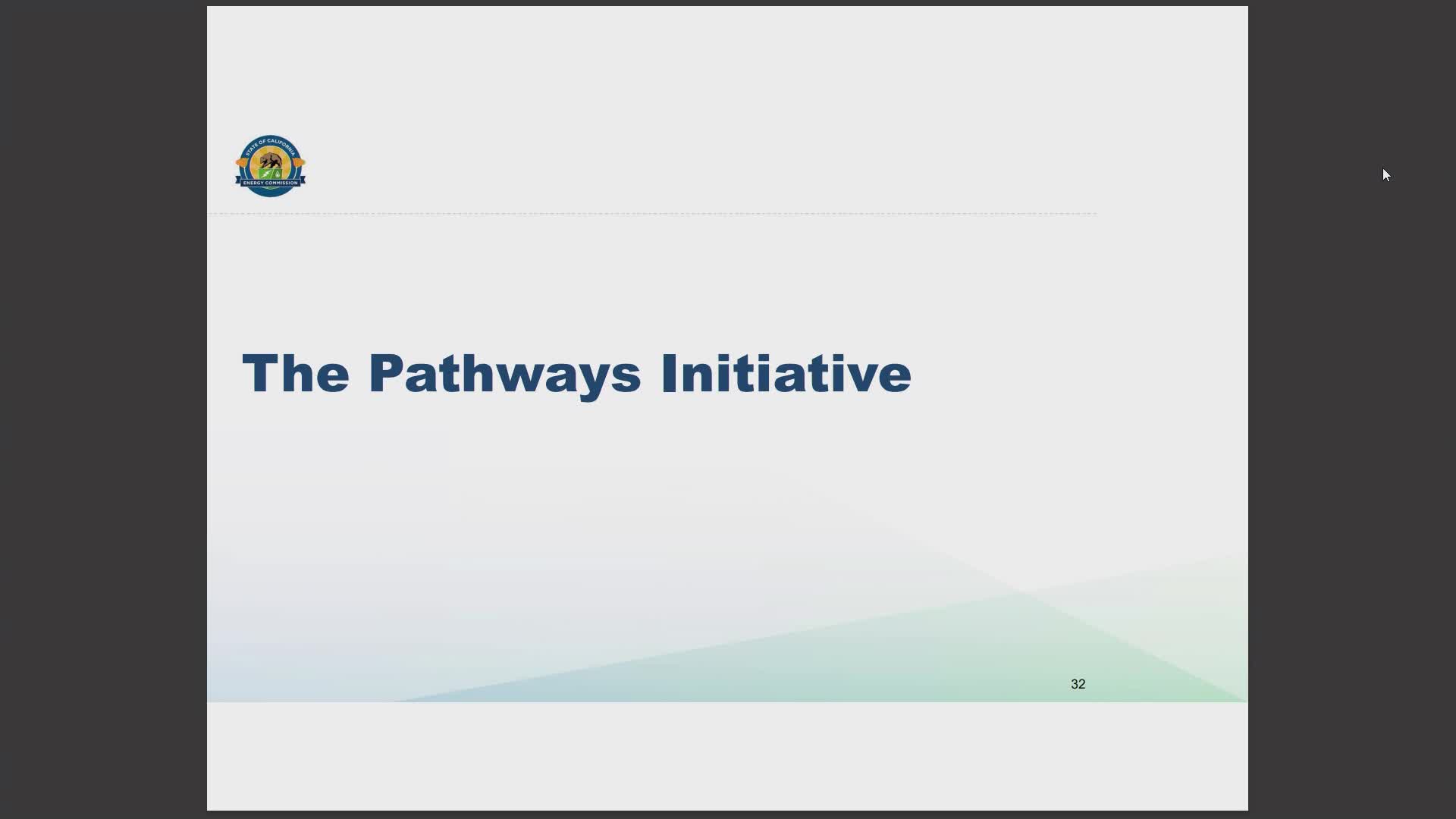Pathways Initiative aims to revolutionize Western energy markets
August 30, 2024 | Energy, Utilities and Communications, Standing Committees, California State Senate, Senate, Legislative, California
This article was created by AI summarizing key points discussed. AI makes mistakes, so for full details and context, please refer to the video of the full meeting. Please report any errors so we can fix them. Report an error »

In a recent government meeting, officials discussed significant advancements in the coordination of energy markets across the western United States, focusing on the California Independent System Operator (CAISO) and its initiatives to enhance market efficiency and reliability.
President Mazur outlined CAISO's dual role as the balancing authority for approximately 80% of California and its responsibilities in overseeing market rules and reliability standards. He emphasized the importance of the Western Energy Imbalance Market (EIM), which has generated around $5.8 billion in gross benefits since its inception in 2014, primarily benefiting California ratepayers. The meeting highlighted the ongoing development of the Extended Day Ahead Market (EDAM), which aims to optimize energy transactions further and expand collaboration across a broader regional footprint.
The Pathways Initiative was introduced as a collaborative effort involving a diverse group of stakeholders, including consumer groups, labor organizations, and utilities, to explore the potential for a larger, more integrated energy market. This initiative seeks to address the fragmented nature of current market operations in the West, which includes multiple balancing authorities and bilateral trading systems. The proposed larger market would enhance resource sharing and reliability, particularly during peak demand periods, by allowing states to optimize their energy resources collectively.
Vice Chair Gunder noted that the Pathways Initiative is currently considering proposals to enhance market governance, aiming to create a more independent structure for market functions while maintaining CAISO's existing balancing authority responsibilities. The CAISO board is expected to vote on these proposals soon, with public workshops planned to gather further input from stakeholders.
The meeting concluded with a commitment to ongoing collaboration and transparency as the Pathways Initiative progresses, with the next steps anticipated to be outlined between September and December. This initiative represents a significant step towards a more coordinated and efficient energy market in the western United States, promising potential cost savings and improved reliability for consumers.
President Mazur outlined CAISO's dual role as the balancing authority for approximately 80% of California and its responsibilities in overseeing market rules and reliability standards. He emphasized the importance of the Western Energy Imbalance Market (EIM), which has generated around $5.8 billion in gross benefits since its inception in 2014, primarily benefiting California ratepayers. The meeting highlighted the ongoing development of the Extended Day Ahead Market (EDAM), which aims to optimize energy transactions further and expand collaboration across a broader regional footprint.
The Pathways Initiative was introduced as a collaborative effort involving a diverse group of stakeholders, including consumer groups, labor organizations, and utilities, to explore the potential for a larger, more integrated energy market. This initiative seeks to address the fragmented nature of current market operations in the West, which includes multiple balancing authorities and bilateral trading systems. The proposed larger market would enhance resource sharing and reliability, particularly during peak demand periods, by allowing states to optimize their energy resources collectively.
Vice Chair Gunder noted that the Pathways Initiative is currently considering proposals to enhance market governance, aiming to create a more independent structure for market functions while maintaining CAISO's existing balancing authority responsibilities. The CAISO board is expected to vote on these proposals soon, with public workshops planned to gather further input from stakeholders.
The meeting concluded with a commitment to ongoing collaboration and transparency as the Pathways Initiative progresses, with the next steps anticipated to be outlined between September and December. This initiative represents a significant step towards a more coordinated and efficient energy market in the western United States, promising potential cost savings and improved reliability for consumers.
View full meeting
This article is based on a recent meeting—watch the full video and explore the complete transcript for deeper insights into the discussion.
View full meeting
